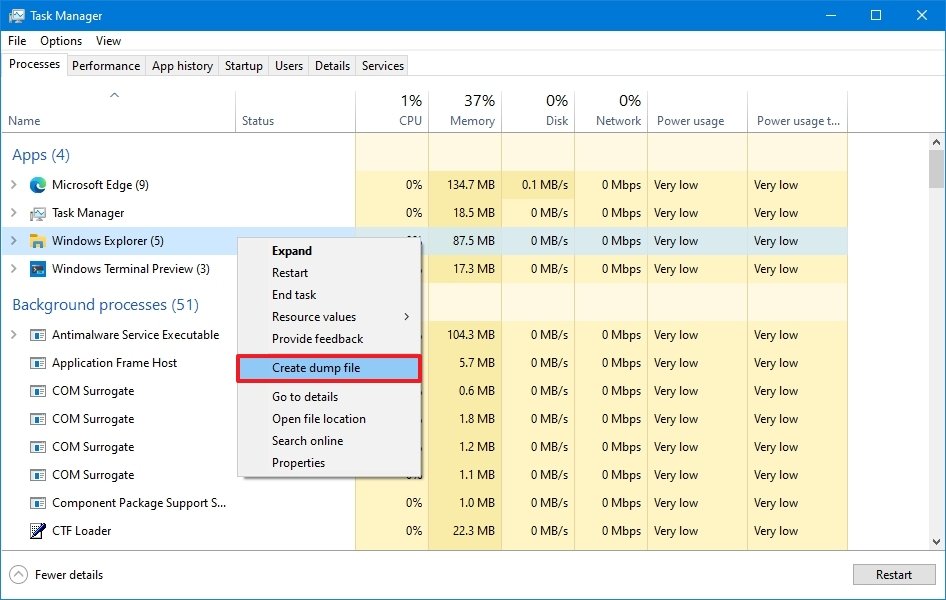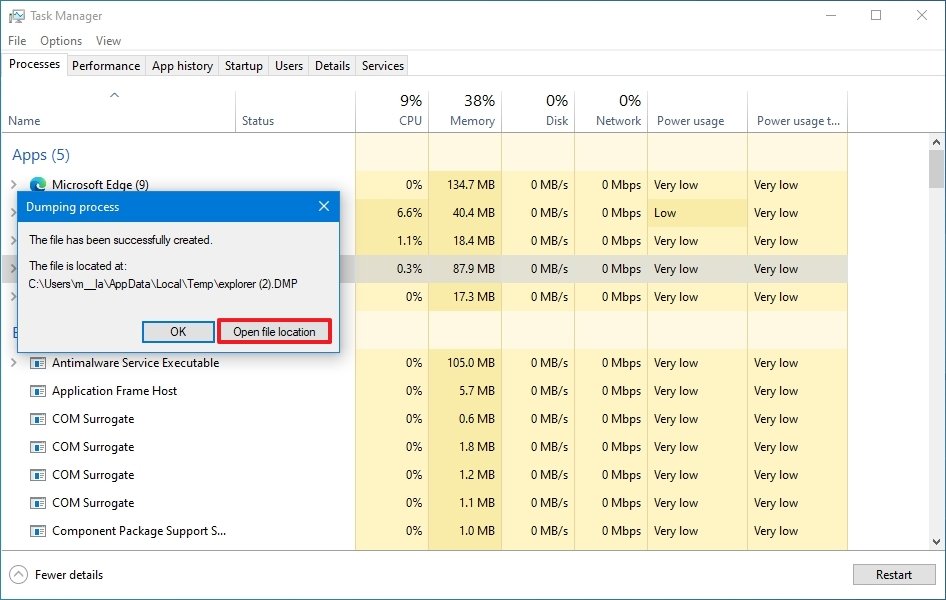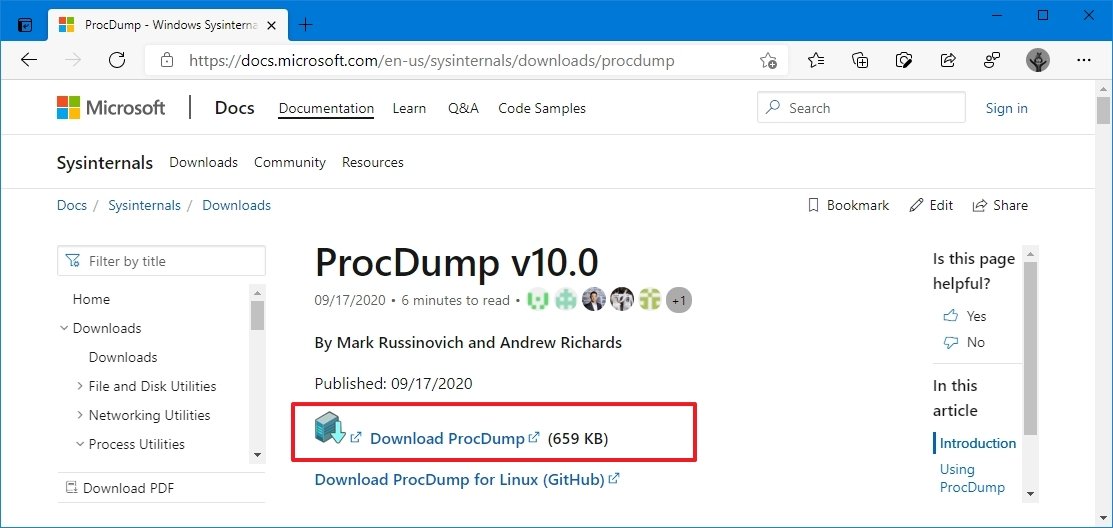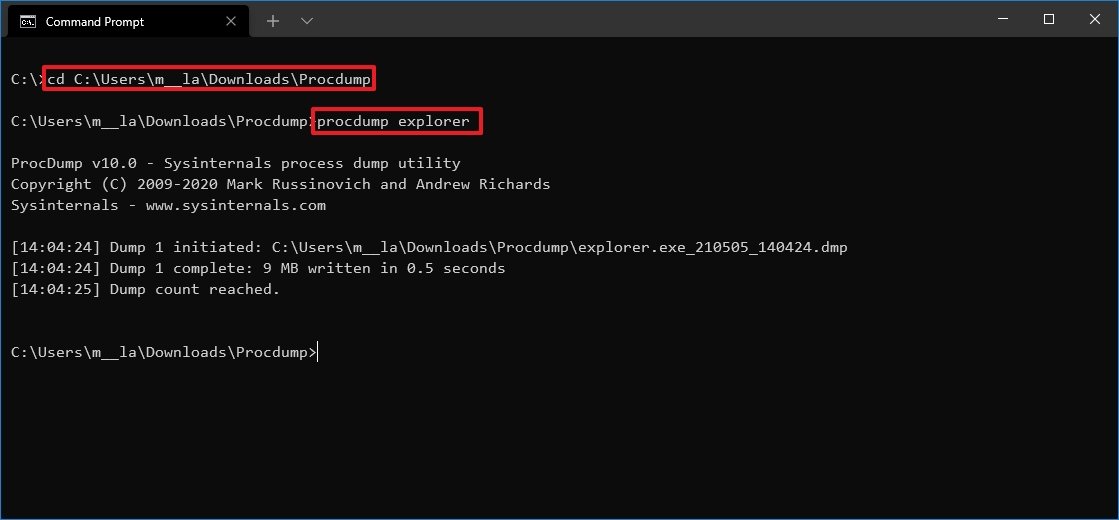You can create crash dump files manually to troubleshot problems with apps, and in this guide, we'll show you two ways to complete this task.
On Windows 10, a crash dump file is usually created automatically when a critical error occurs with the information about the system memory, which you can then use to analyze and determine the reason for the issue.
Although these files are created automatically, sometimes, it may also be necessary to make them manually. For instance, when the app is not responding, and you have to send details to technical support for analysis and troubleshooting purposes. Or if you are building an application, and you need to find out why it's using a lot of system resources, such as processor and memory.
Regardless of the reason, on Windows 10, you have at least two ways to create an app crash dump file using Task Manager and Command Prompt with the ProcDump tool.
In this Windows 10 guide, we will show you two ways to create a crash dump file for an application.
How to create crash dump file with Task Manager
To create a crash dump file with the Windows 10 Task Manager, use these steps:
- Open Start.
- Search for Task Manager and click the top result to open the app.
- Click the Processes tab.
-
Right-click the application or process and select the Create dump file option.
-
Click the Open file location button.
- Right-click the .dmp file and select the Cut option.
- Navigate to the folder you want to store the file.
- Right-click the folder and select the Paste option.
Once you complete the steps, the dump error file will be created. If you need to open the file to diagnose the problem, you can use these instructions.
How to create cash dump file with Command Prompt
Alternatively, you can also use ProcDump, which is a command-line tool available through the Microsoft Sysinternals website that allows you to monitor a program for processor spikes and generate a crash dump, which you can then use to determine the cause of the problem. However, you can also use the tool to create crash dumps with Command Prompt manually.
To create an app crash dump file with command lines, use these steps:
- Open Microsoft Sysinternals website.
-
Click the Download ProcDump link.
- Open the zip file containing the ProcDump tool and extract its content.
- Open Start.
- Search for Command Prompt, right-click the top result, and select the Run as administrator option.
-
Type the following command to open the ProcDump folder and press Enter:
cd C:\PATH-TO-APP\ProcdumpIn the command, make sure to update the path with the location of the folder with ProcDump files.
-
Type the following command to create a (mini) dump file of a running application and press Enter:
procdump APP-NAMEIn the command, replace APP-NAME for the executable name of the app.
This example creates a dump error file for File Explorer:
procdump explorer -
(Optional) Type the following command to create a dump file using the process ID and press Enter:
procdump PROCESS-IDIn the command, replace PROCESS-ID with the actual ID of the process or application.
This example creates a dump error file for File Explorer with the process ID of 6112:
procdump 6112Quick tip: You can always find the process ID (PID) of an application in the Details tab of Task Manager or using the
tasklistcommand. -
Type the following command to create a full dump file for an application and press Enter:
procdump -ma APP-OR-PIDIn the command, replace APP-OR-PID for the name or process ID of the app.
This example creates a full dump file for File Explorer:
procdump -ma explorerQuick note: A full dump file contains everything available in memory related to the application. In contrast, a mini dump file is only several megabytes in size, and it includes basic information about the application.
- Confirm the location of the .dmp file.
After you complete the steps, the crash dump file will be created (usually) in the folder with the ProcDump files.
We are focusing this guide on the basics of creating a crash dump file, but you can use the procdump /? to learn about all the options available with the utility.
More Windows 10 resources
For more helpful articles, coverage, and answers to common questions about Windows 10, visit the following resources:











0 comments:
Post a Comment